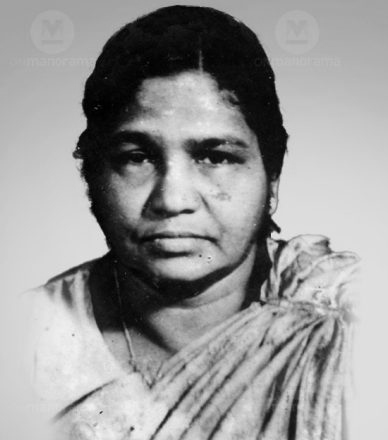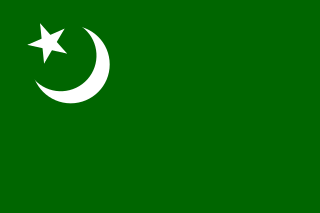
Travancore-Cochin or Thiru-Kochi was a short-lived state of India (1949–1956). It was originally called United State of Travancore and Cochin and was created on 1 July 1949 by the merger of two former Princely States, the kingdoms of Travancore and Cochin with Trivandrum as the capital. It was renamed State of Travancore-Cochin in January 1950.

R. Sankar was the third Chief Minister of Kerala from 1962 to 1964. He was also the Deputy Chief Minister of the State from 1960 to 1962. Sankar apart as a politician is known as a statesman, administrator, orator, educationist, writer and editor.

The Vimochana Samaram (1958–59) was an anti-Communist backlash against the first elected state-government in Kerala, India, which was led by E. M. S. Namboodiripad of the Communist Party of India. Organised opposition to the state government was spearheaded by the Catholic Church in Kerala, the Nair Service Society and the Indian Union Muslim League, and backed by elements of India's ruling Indian National Congress Party; although termed a "liberation struggle", the campaign was largely peaceful, taking the form of statewide meetings and public demonstrations. In June 1959, Kerala was rocked by mass protests calling for the resignation of the communist ministry. The Indian government finally bowed to pressure and dismissed Namboodiripad on July 31, 1959.

Thiruvananthapuram Parliamentary Constituency is one of the 20 parliamentary constituencies of Kerala, the southern state of India. It is located in Thiruvananthapuram district and encompasses Thiruvananthapuram city, the capital of Kerala State.

The first legislative assembly Election to the Madras state on the basis of universal adult suffrage was held in March 1952. This was the first election held in Madras state after the Indian Independence. This election was officially known as 1951 Madras State Election, even though through delays, actual voting didn't take place until early 1952.

The second legislative assembly election to the Madras state was held on 31 March 1957. This was the first election held after the linguistic reorganisation of Madras state in 1954. Indian National Congress and its leader K. Kamaraj won the election, and defeated its rival Dravida Munnetra Kazhagam. In 1954, due to the resignation of C. Rajagopalachari, for his controversial Kula Kalvi Thittam, the leadership of Congress was contested, between K. Kamaraj, and C. Subramaniam. Eventually, K. Kamaraj, won the support of the party, was elected leader and chief minister of Madras State in 1954. In a surprise move, he appointed both M. Bhaktavatsalam and C. Subramaniam, in his cabinet, allowing great unity amongst Congress, that ruled the state of Madras, for the next decade. This election saw future DMK leaders, M. Karunanidhi and K. Anbazhagan winning their first MLA seat in the legislative assembly.
C. M. Stephen was an Indian politician and Union Minister in the Republic of India. C. M. Stephen was born on 23 December 1918 to Eapen Mathai and Esther of Chembakassery house in Cherukole, Mavelikkara. During his school days, Stephen was active in the Balajanasakhyam. This helped him to develop leadership qualities, oratorial and organizing skills. After completing B. L., Stephen started his career as a journalist. He also started 'Pouraprabha' an evening daily. Through this daily, he supported the Travancore Congress and attacked the rule of C. P. Ramaswamy Iyer. In 1949, he gave up his career as a journalist and started practising law. In 1951, he joined active politics and in the same year became the D.C.C. president of Kollam. He was a close associate of veteran Congress leaders P.T.Chacko, Pattom Thanu Pillai and R. Sankar and provided leadership in the Vimochana Samaram during 1958-59 period as an associate of P. T. Chacko, Pattom Thanu Pillai, R. Sankar and others.
P. P. Ummer Koya was an Indian politician, Gandhian, freedom fighter and educationist. He was the second Education Minister of Government of Kerala headed by Pattom Thanu Pillai. He also served as the Minister for Public Works in government headed by R. Sankar.
Pulloli Thomas Chacko was a prominent politician of Travancore and later Kerala. He was the first Leader of Opposition of the newly formed state of Kerala. He was also the Home Minister of Kerala holding the additional portfolios of Revenue and Law during the period 1960-64.

Annie Mascarene was an Indian freedom fighter and Member of Parliament from Thiruvananthapuram, Kerala.

Elections to the Legislative Assembly of the Indian state of Travancore-Cochin were held on 27 March 1952.

The Kerala Legislative Assembly election of 1957 was the first assembly election in the Indian state of Kerala. The Communist Party of India won the election with 60 seats. The election led to the formation of first democratically elected communist government in India and second in the world after San Marino.
R.S. Unni was an Indian politician and trade unionist. He served as a Central Committee member of the Revolutionary Socialist Party (RSP) and president of the United Trade Union Congress (UTUC). A state legislator for decades, he served as a Kerala state government minister in the 1980s.
Kerala Janatha was a Malayalam language morning daily newspaper published from Thiruvananthapuram, India. The newspaper was published by Kerala Janatha Printers & Publishers (Pvt.), Ltd. It was published daily, except Mondays.
The Pattom A Thanupillai Ministry was a Kerala government ministry formed on 22 February 1960 and lasted till 26 September 1962.
The Kerala Legislative Assembly election of 1965 was the third assembly election in the Indian state of Kerala.

The Kerala Legislative Assembly election of 1967 was the fourth assembly election in the Indian state of Kerala.













